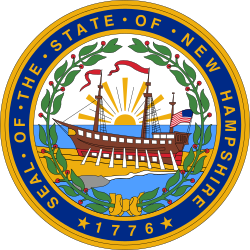March 13, 1956 | ||||||||||||||||
| ||||||||||||||||
 County results Kefauver | ||||||||||||||||
The 1956 New Hampshire Democratic presidential primary was held on March 13, 1956, in New Hampshire as one of the Democratic Party's statewide nomination contests ahead of the 1956 United States presidential election.


